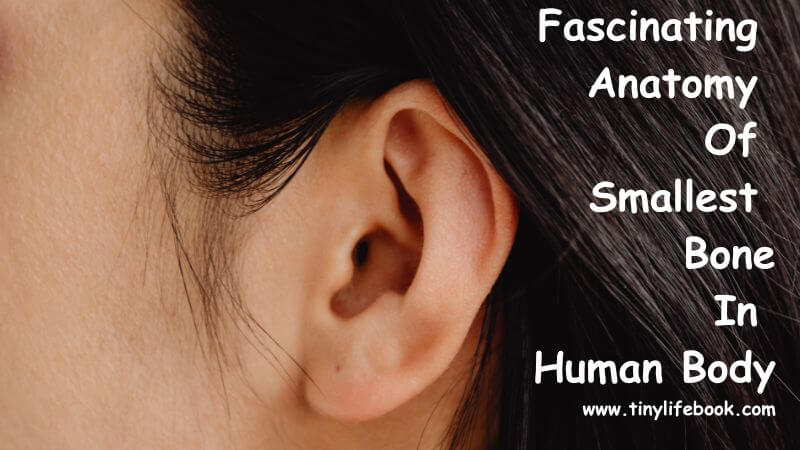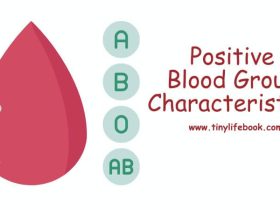We’ve all heard about the amazing complexity and minute detail of the human body, which frequently goes unnoticed. Let’s look at the smallest bone in human body instead of ignoring the complete bone structure.
For instance, did you know that there are 206 bones in our bodies?
Some of them are rather small, yet they always serve a crucial function in our day-to-day activities.
Today, we’re delving further into this intriguing realm by taking a closer look at the tiniest bone in the human body.
Its movement and operation in every detail are astounding.
When attempting to understand the makeup of the human body, researchers have access to a veritable gold mine in the form of human bones.
Let’s look at the smallest bone in human body instead of ignoring the complete bone structure.
The Smallest Bone In Human Body
The smallest bone in the body of a human, which totals around 206, is found in the ear.
The stapes bone, which has a significant impact on hearing, is this bone.
Three of its components work together to stop sound waves from leaving the middle ear and instead amplify them for greater auditory awareness.
This very little bone has a length of only 3 mm.
Considering how much it affects how we hear, this quality is astonishing.
Definition Of Stapes
The smallest bone in the body is the stapes!
This little bone, sometimes known as the stirrup, combines with two other ear bones to transmit sound waves to the inner ear.
A bone called the stapes, often known as the stirrup, is located in the middle ear of mammals like humans and plays a role in the transmission of sound vibrations to the inner ear.
These are transmitted medially to the oval window by the stirrup-shaped tiny bone that is on.
Because of its similarity to a stirrup, the stapes is the tiniest and lightest named bone in the human body.
Role Of Smallest Bone In Human Body
The stirrup, or stapes, is the tiniest bone in the human body.
It is a component of the auditory ossicles, which are found in the middle ear and are responsible for amplifying and transmitting sound from the outer to the inner ear.
As a result, it is crucial to our capacity for hearing; without it, hearing would not exist at all.
The stirrup itself is a little bone with a stirrup shape that aids in the transformation of sound into mechanical energy that may subsequently reach the inner ear.
Its crucial role in hearing and its delicate construction serve as a reminder of how complicated even the tiniest of our bones can be.
Anatomy Of Smallest Bone In Human Body
In the human body, the stapes bone is the tiniest bone.
It is one of the ossicles located inside the middle ear that is the innermost (most medial and closest to the cochlea).
The stapes might be visualised as a stirrup that is dangling from a saddle and lying on its side.
The bottom section rests against the tympanic cavity’s oval window, while the top portion communicates with the incus.
The anterior and posterior arms of the stapes, which are located on its head, connect to the incus’ oval base.
The incudostapedial joint joins the incus with the head of the stapes.
The stapedial membrane, a ligament-like tissue that spans the breadth of the anterior and posterior limbs as well as the base, assists in this connection.
The stapedial annular ligament joins the oval window to the base of the stapes on its medial side.
A thin membrane known as the oval window protects the cochlea’s opening.
The stapedius muscle connects the neck of the stapes to the pyramidal eminence of the mastoid bone.
In reaction to a loud noise, this muscle contracts, pulling on the annular ligament to stop the stapes bone from moving too much.
Component Of Stapes
- Base Or Stapes Footplate : Through the annular ligament, the base, also known as the stape footplate, is connected to the oval window. The cochlea receives vibrations via the base.
- Earlier crus
- Neck: The anterior and posterior crura on the neck connect it to the head.
- Head : Concave in form, the head rests on top of the neck. Additionally known as the capitulum. Through the incudostapedial joint, the head and incus come together to form a joint.
- Stapes superstructure: Also known as the supra structure, the stapes superstructure is made up of the head, the neck, and the crura.
Function Of Smallest Bone In Human Body
The middle ear amplifies the sound waves as they travel through it.
The stapes, the last bone in the ossicular chain, strikes the oval window and produces a wave in the fluid of the inner ear.
The inner ear can start a process that converts sound waves into electrical impulses that the brain can comprehend thanks to this fluid wave.
The stapes can be obliterated by a severe head injury, which could result in partial or complete hearing loss.
Due to the fact that the ossicles create a chain of bones, this also applies to the incus and malleus.
Associated Conditions
-
Otitis Media with Effusion
An ear infection is called otitis media.
When there is fluid in the middle ear, the condition is referred to as otitis media with effusion.
Infection and fluid accumulation can affect the ossicular chain in the middle ear, particularly if they persist for a long time.
This might cause a loss of hearing that is either temporary or permanent.
Although it can impact anybody, this issue affects youngsters more frequently than it does adults.
It is usually associated with allergies and upper respiratory illnesses, both of which can lead to congestion or inadequate ear draining.
This condition occasionally requires surgery to open up the auditory tube in order to allow the ear to drain.
Ossicles that have been damaged occasionally need to be surgically fixed.
-
Otosclerosis
In otosclerosis, abnormal ossicular bone remodelling causes the stapes to become locked in place.
At that time, the stapes cannot strike the oval window, stopping the fluid wave of the cochlea from producing sound.
The cause of otosclerosis is uncertain. Middle-aged women are most often affected, and it can run in families.
Signs and symptoms of otosclerosis include:
- Hearing loss
- Tinnitus (Ringing in the ears)
- Difficulty balancing or dizziness
-
Cholesteatoma
Cholesteatoma is a disease where the eardrum’s skin develops erratically.
This might be brought on by congenital problems or repeated ear infections with fluid in the ear.
Cholesteatoma may cause the stapes and other ossicles to deteriorate.
Ear pressure, hearing loss, tinnitus, and ear leaking are all possible signs of cholesteatoma.
If neglected, cholesteatoma can have disastrous side consequences include deafness, meningitis, and brain abscess.
The course of action is determined by the size of the growth and the degree, if any, of ear injury.
Treatment Of Smallest Bone In Human Body
If chronic otitis media as well as otitis media with effusion aren’t properly and quickly managed, they will worsen and cause damage to the ossicular chain.
Hearing impairment might result from this.Several remedies are conceivable, including:
- Antibiotics if there is an infection
- Treatment of underlying allergies that may be causing issues
- Surgery is performed when necessary
To widen the auditory canal, allow proper ear drainage, and restore healthy eardrum pressure, synthetic ventilation tubing are able to be surgically established.
There is little chance of problems with this very straightforward treatment, which is commonly carried out in the United States, and there is a short recovery period.
According to the degree of the stapes bone degradation brought on by the cholesteatoma or another medical condition, a surgical total or partial ossicular substitution (TORP or PORP) may be possible to regain hearing in some circumstances.
Despite the relatively high success rate of this treatment, uncommon complications are occur and might exacerbate existing hearing issues.
Conclusion
The stape bone is an important bone in the human auditory system.
They are the tiniest bone known to exist in the human body and are in charge of transferring motion from the outer eardrums to the fluid in the inner ear, which converts sound waves into nerve impulses.
The brain interprets these electrical signals from the nerves.
We couldn’t hear the sounds around us if the stapes weren’t there.
Our ability to hear depends on this little bone, despite its diminutive size.
Follow Us: Facebook | Instagram | Twitter | Pinterest













Leave a Reply